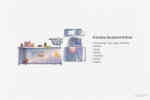Step 2 of 5•2 minutes read
PHYSICAL Contamination and Control
Remember physical contamination not only is very unpleasant but it can also cause harm through choking for example.
Sources of Physical Contamination

Potential contamination from delivered goods
Physical contamination can happen during delivery from suppliers and from local shops (especially fresh produce markets) that interior crew often go to, to source provisions. Using good suppliers is good practice to reduce the risk of physical contamination.

Be vigilant when unpacking goods
Remove as much packaging as possible before bringing on board. Always unpack away from food preparation areas and do not have a notice board with pins in the food preparation areas.

Dirty or poorly maintained equipment or premises can cause contamination
Providing crew with training and cleaning instructions for effective equipment cleaning to ensure it is put back together correctly with no loose parts. If they are not trained equipment may not go back together properly. Always check for equipment damages that may end up in the food.
A planned approach to pest control so dropping and gnawed packaging does not end up in the food. There is more about pests later in this training
Planned galley and pantry maintenance so that it does not happen when food is being prepared is essential. Yachts are almost always well maintained, but pay special attention during shipyard, refit or when contractors are on board. Equipment, nuts, bolts, pieces of wiring etc. can easily contaminate food if areas are not thoroughly cleaned after works have been completed. Avoid machinery maintenance in galleys and pantries. Move to another area if possible.
Avoid waste accumulation to reduce the risk of attracting pests and store food waste in sealed containers or tied black bags.

Contamination from people comes in many forms
Additional Controls for Physical Contamination
Crew should wear the correct uniform, head coverings with no jewellery in the galley and other food areas. Prohibiting unauthorised crew and visitors from entering the galley will prevent hair and other items from being dropped in food.
Glass breakages need to be dealt with as part of SOP,s as shards of glass easily get in food.
Train the crew to report defects and do not have notice boards with drawing pins staples etc. in food areas. Use high-quality equipment that is hard, non-permeable and in good condition especially avoiding equipment made of softwood.